  |
KAZAKSTAN & KYRGYZSTAN
7 Jul Charyn Canyon, Karkara Valley & Karakol (Kyrgyzstan) |
  |
KAZAKSTAN & KYRGYZSTAN
7 Jul Charyn Canyon, Karkara Valley & Karakol (Kyrgyzstan) |
Charyn Canyon - this is a barren desert-like area on the steppes, with
a deep canyon and unusual rock formations. The nature park guards
(who laid lazily in their yurt at the park entrance) demanded a ridiculous
sum of 3000 tenge (about US$40) but we managed to reduce that to 600 tenge.
We stayed for a very short while before heading towards the valley of Karkara
River, which forms the eastern border between Kazakstan and Kyrgyzstan,
two countries whose presidents' children married in a well publicized "royal
wedding" recently.
Imagine a flat, green plain blossomed with wild summer flowers, and flanked by snow-capped mountains - that's the Karkara Valley. Each June, the Kazak and Kyrgyz nomads gather here for the annual Chabana, or cowboy festival. We have read about this in the Lonely Planet guide and imagined that the Valley would be full of yurts and nomads. Hence we decided to travel to Karakol this way, rather than the more popular route via Bishkek. Well, we were a few weeks late, and it seemed that the nomads have all gone afar. A few scattered yurts were about all we saw, and some were probably temporary storerooms for typical "modern" farmhouses. But the beautiful setting compensated for that. Standing on some of the ancient Scythian burial mounds, I could imagine the migration of ancient tribes across the Eurasian continent, as well as their loaded horses and chariots returning with the raided riches of caravans and trading cities. Not to mention the cries and moans of captured city-dwellers from Samarkand, Baghdad and Kiev, most of them no doubt would be slaves and quite a few would contribute to the complex ethnic mix which forms today's Central Asian peoples.
This must be one of the most remote border crossings in the world.
On the Kazak side, the customs post was manned by a few sleepy, shirtless,
young Kazaks. After a chat with Vladimir and a few bottles of mineral
water bought in Almaty, they lifted the barrier for our van to cross into
the border zone. Crossing the Kyrgyz post was no different
- we merely had to show our passports and our driver again had a little
chat in the border post. A few herdsmen we saw had it even easier.
They, together with their numerous sheep, simply ignored the existence
of the border and rode across the customs barrier.
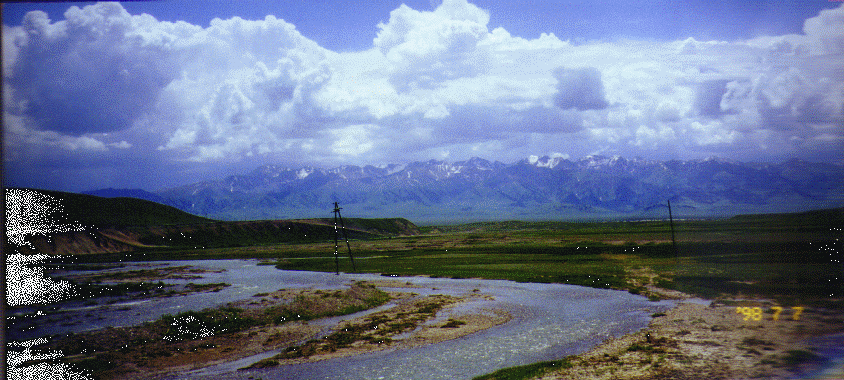 |
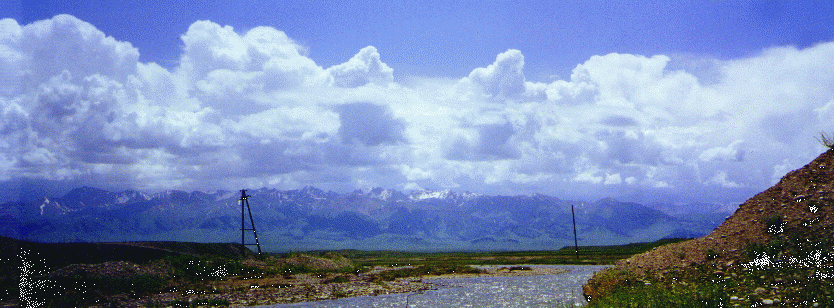 |
|
| Karkara Valley: Tian Shan behind the Karkara River | Karkara again | Zodiac: Kazak heritage |
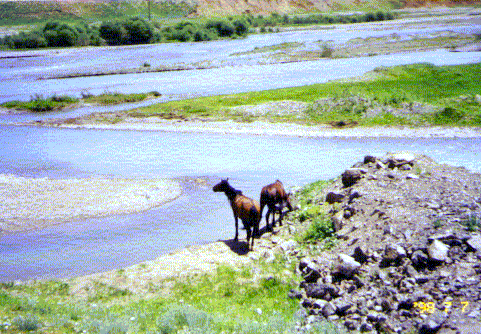 |
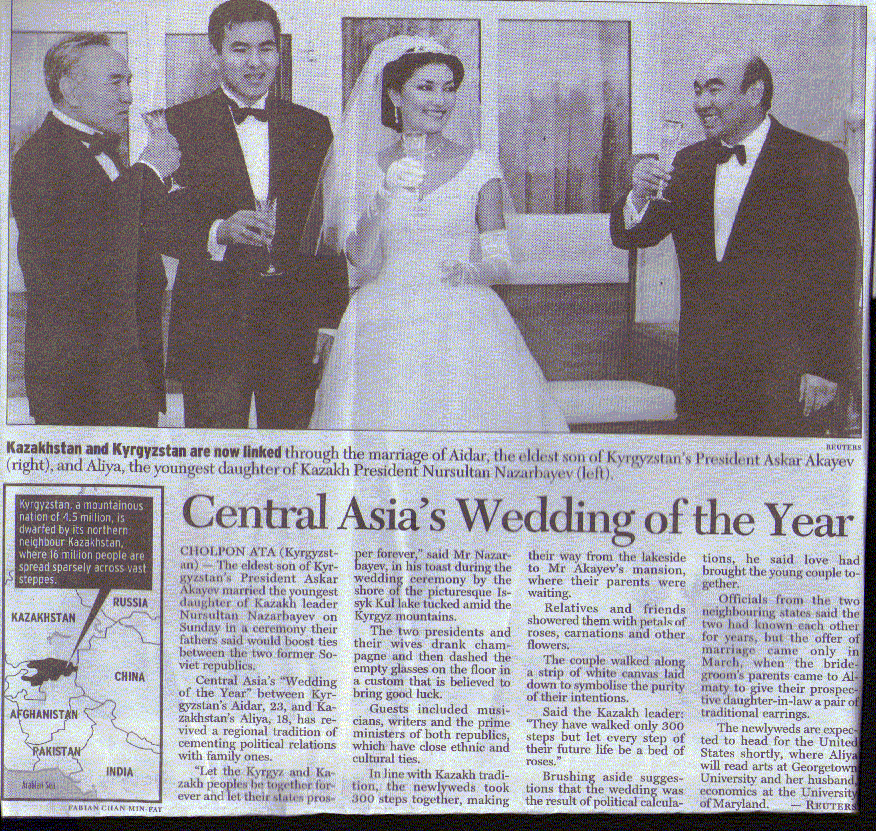 |
|
| Horses in Karkara | Kerosene-seller | News article on the Central Asian "Wedding of the Year" |
After a ride across a mountain pass, we soon found ourselves in the
fertile plains of the Tup River and Karakol. In the 19th century,
the Russian Cossack-peasants discovered this fertile plain with a pleasant
climate, and settled here in large numbers. Hence the many Russian
villages we passed on the way to Karakol.
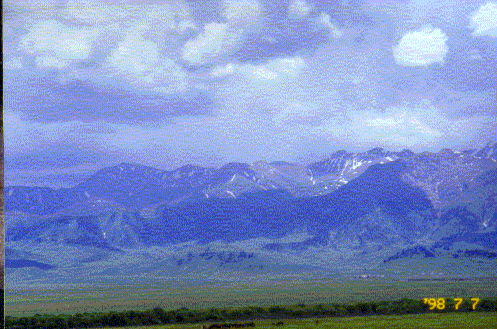 |
|
|
Upon reaching Karakol, we met S. Pyshnenko of PSI Travel, a travel agent recommended by Lonely Planet. We decided to stay at his US$8 a night apartment and a 2-day hike to Altyn Arashan with his guide ($20 a day for the guide, daylight-robbery-price for transport to starting point $20x2, rental for camping equipment $5 per day & sleeping bags $5). That evening we strolled around in Karakol, a small dusty city with lots of old (and decaying) one storey Russian colonial houses. It was interesting that this city still retained a prominent statue of Lenin and the main streets were named after Lenin and Komsomol. Tried to find a place to eat but only found one rather lousy canteen with cabbage soup and sour cream.
|
|
Click here to send an email to Tan Wee Cheng |